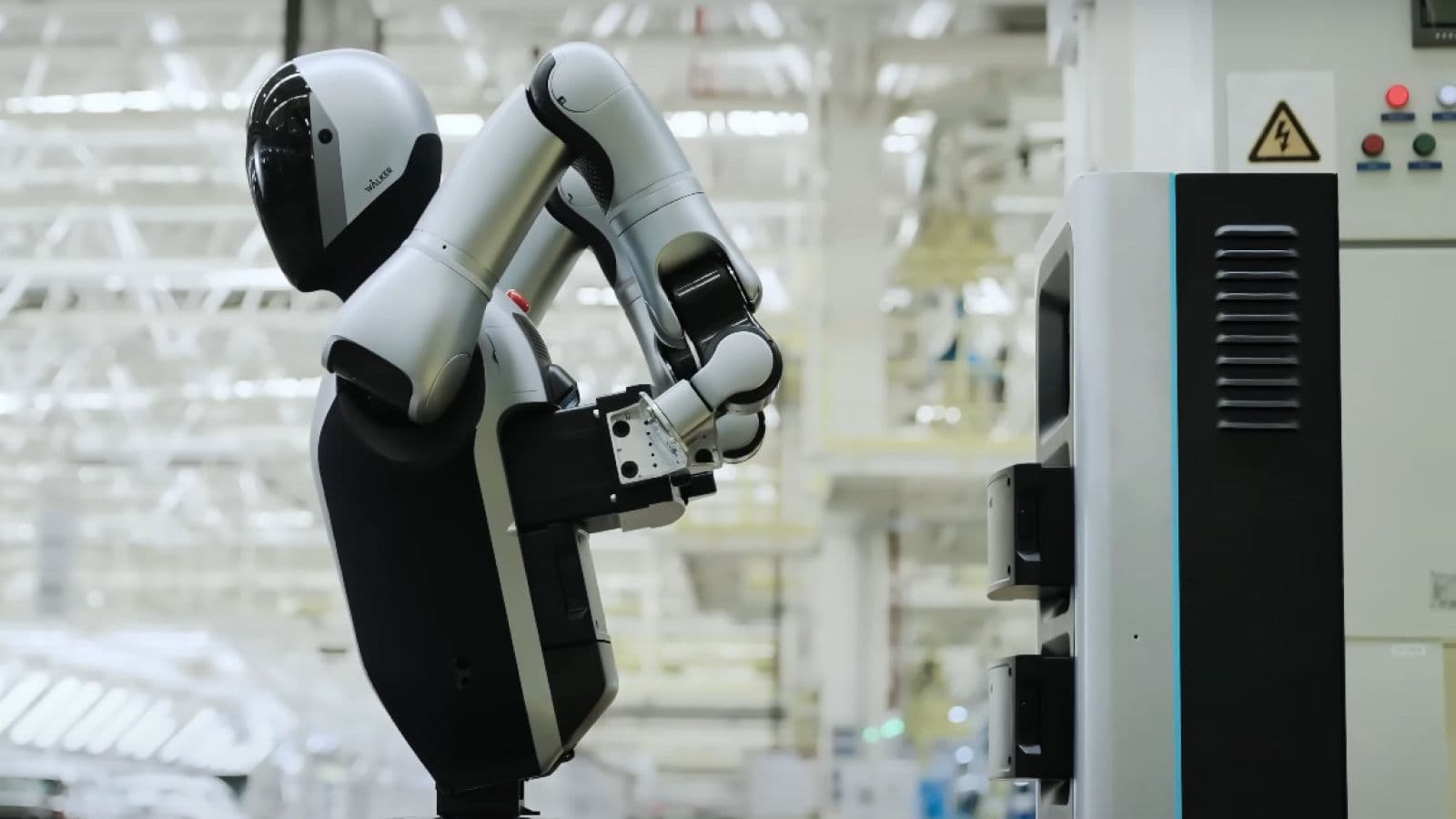We're loading the full news article for you. This includes the article content, images, author information, and related articles.
China’s Walker S2 robot detects low power, walks to a station, removes its depleted pack and inserts a fresh one, enabling true 24/7 autonomous operation.

July 2025 — In a groundbreaking demonstration that could redefine service robotics, UBTECH’s Walker S2 humanoid robot has successfully performed a fully autonomous battery swap—a feat never before seen in a humanoid platform. The 1.6-meter-tall bipedal robot detected a low-power state, walked independently to a designated charging station, and hot-swapped its 48-volt power pack, resuming operation without human intervention or shutdown.
The demonstration, conducted at UBTECH’s robotics lab and streamed live to select industry stakeholders, is being hailed as a milestone in autonomous robotics, particularly in contexts where downtime is costly or impractical.
Engineering a 24/7 Workforce
The ability for a humanoid robot to self-manage its energy supply has long been considered a bottleneck in real-world deployment. Most commercial robots today require either plug-in charging, human-assisted battery replacement, or full system pauses—none of which support continuous, round-the-clock operation.
Walker S2’s hot-swapping capability addresses this challenge head-on. The robot uses onboard diagnostics to monitor its energy reserves in real time, maps its environment to locate the nearest docking point, and aligns precisely with a robotic mechanism that swaps out its depleted battery with a fresh one—all while remaining upright and operational.
“Power autonomy is the last frontier for truly independent robots,” said Dr. Yong Qiang, lead engineer on the Walker S2 project. “This system makes humanoids viable not just for tasks, but for sustained roles in logistics, hospitality, and even healthcare.”
Why It Matters
The implications extend far beyond technical showmanship. With energy autonomy, humanoid robots like Walker S2 can now function in high-throughput environments without supervision—think hotel concierges, airport security assistants, warehouse porters, or retail guides—where continuous availability is crucial.
Facilities such as malls, hospitals, and factories that operate across multiple shifts can now deploy humanoids for 24/7 coverage, reducing reliance on human staff for repetitive or physically demanding tasks. It also opens the door for fleet-based humanoid operations, where dozens of robots could coordinate shifts, charging, and maintenance entirely autonomously.
Market Positioning and Next Steps
UBTECH, a Chinese robotics company known for developing humanoids with expressive mobility and AI-enabled interaction, has long positioned Walker as a bridge between research and commercial applications. The S2 model, launched earlier this year, features enhanced mobility, modular limbs, and natural language integration. With the battery autonomy upgrade, Walker S2 is now pushing into a new phase of operational viability.
Rival companies, including Tesla’s Optimus, Agility Robotics’ Digit, and Figure AI, have also demonstrated walking humanoids. But none have yet matched this level of end-to-end autonomy in energy management—a domain previously seen as too complex for mobile humanoids.
Looking Forward
UBTECH says it plans to roll out pilot programs in select hotels and airports later this year, with the aim of scaling production in 2026. If field tests confirm the robustness of the battery swap system, Walker S2 could represent a pivotal step toward fully autonomous, general-purpose service robots.
As demand grows for intelligent automation amid global labor shortages, power autonomy could be the feature that finally moves humanoids from novelty to necessity.
Keep the conversation in one place—threads here stay linked to the story and in the forums.
Other hot threads
E-sports and Gaming Community in Kenya
Active 7 months ago
Popular Recreational Activities Across Counties
Active 7 months ago
The Role of Technology in Modern Agriculture (AgriTech)
Active 7 months ago
Investing in Youth Sports Development Programs
Active 7 months ago